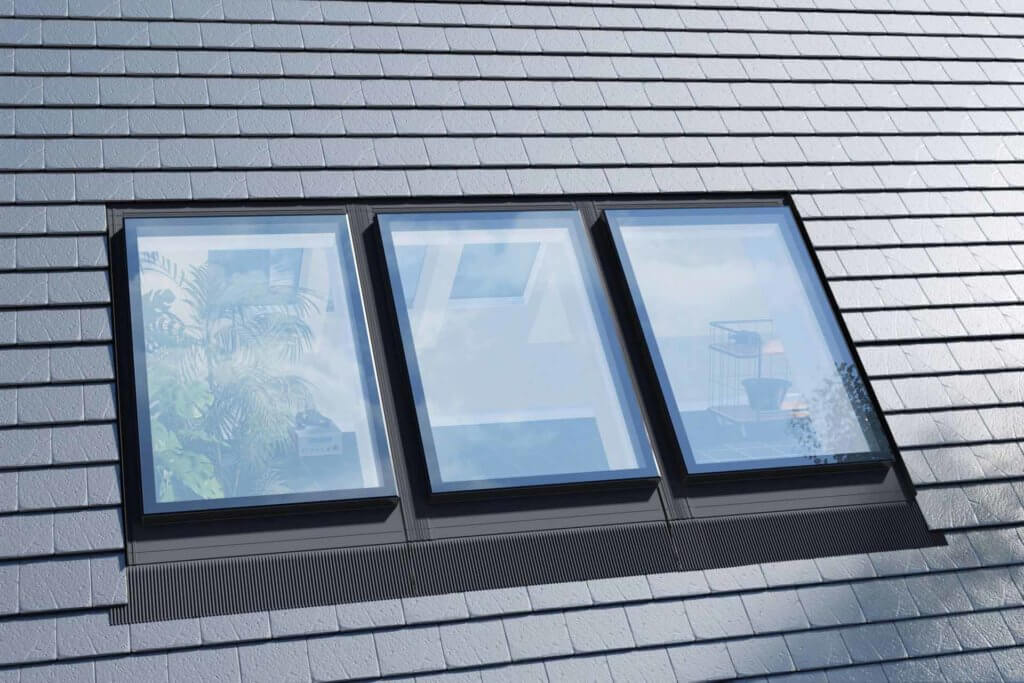Whether it is purchasing a property, designing your new home, or considering renovation work, you need to know the pitch of the roof, as it impacts the quality, architecture, and integrity of the building.
Thankfully, calculating the roof pitch is relatively straightforward, and this article will teach you how to do it!
Table of Contents
What Is the Roof Pitch? How to Calculate Roof Pitch?
The roof pitch measures the angle between your roof’s highest and lowest point, and it is typically represented by ratios. A 3:12 roof pitch means the roof rises vertically by 3 inches for every 12 inches of horizontal distance.
Though not industry standard, you can also represent roof pitch in degrees. A 12:12 roof pitch has a 45-degree angle, 7:12 is approximately a ~30-degree angle, and so forth.
Measuring Roof Pitch
Tools You Need to Measure Roof Pitch
A tape measure and a spirit level are the only two tools required to calculate roof pitch. However, you might also need an access ladder and some safety equipment to ensure you get around the roof safely.
Measuring the Roof Slope
Mathematically, the pitch of the roof is X:12 where X = (the rise / the run) * 12. This might sound confusing, but it is very straightforward.
The rise of a roof is the vertical height of the roof from its base to its highest point. The run of the roof is the horizontal length from the edge of the roof to its highest point. And these two numbers are all you’ll need to determine roof pitch.
An example will help illustrate how you can calculate roof pitch on your own property: A roof with a rise of one foot and a run of two feet will have a tangent of 0.5 (roof rise/run). The pitch of the roof is (0.5 * 12):12. We merely need to follow the parentheses rule to find roof pitch, which ends up being 6:12.
Using a Roof Pitch Calculator
If the above calculations are too complicated for you, don’t worry! You can simply enter the numbers into a roof pitch calculator and it will do the rest for you!
Why Does the Pitch Matter?
The Integrity of the Building
The pitch of the roof has a substantial impact on its integrity and durability. It impacts how much it stands rain and wind, it influences how the pressure from the roof’s weight is distributed throughout the structure, and it affects drainage.
Renovation and Extension Work
Whether it is complex extension work or replacing tiles, the roof’s pitch will impact both the planning and execution of renovations. This is especially true for work that will change the rise and run of the roof, which will likely require planning permission.
Roof Types by Pitch
- Flat roof: Everything from completely flat roofs you’ll typically find in arid climates to a 1:12 pitch ratio is considered “flat.” The minimal vertical rise of these roofs makes them cheaper to build and easier to maintain. They have poor drainage and can’t withstand rain and snow very well, which makes them poor choices for Britain.
- Low-slope roof: A minimum roof pitch of 1:12 and a maximum one of 4:12 is the range considered “low-slope.” A low-sloped roof shares many of the characteristics of a flat roof but is preferred over the latter for multi-pitched roofs that feature a gable.
- Conventional roof: medium-sloped or conventional roofs have pitches between 4:12 and 9:12, which is considered the “standard pitch”. These represent the largest subsection of properties in the UK. This is largely because they withstand rain and snow well and they have a robust construction.
- High-slope roof: Roofs with a minimum pitch of 9:12 are considered “high-slope.” There are several reasons why high-pitched roofs are attractive to homeowners. They can integrated into a set of unique architectural styles, offer a lot of attic space, and can even be more durable than their conventional counterparts.
Roof Pitch FAQ
Is [insert number] Roof Pitch Angle Okay?
Homeowners often ask if a 10-degree, 20-degree, or 30-degree roof pitch is okay, and the simple answer it depends. The roofing materials, the architectural style of your property, local weather, and the building regulations in your area will determine the minimum and maximum roof angle.
Can You Change the Pitch of Your Roof?
Yes, through extensions and renovations you can make the entire roof have a flatter or a steeper pitch.
